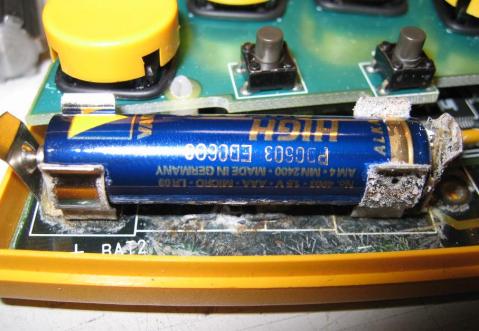Korg Polysix board repairs
A defunct Korg Polysix inbound for repairs.. Prior to getting my hands on the synth I briefly checked the net for schematics and typical faults. The owner had taken a look inside and noticed a leaked battery, so I knew a little bit what to expect.. Seemingly, battery leakage is a pretty common root cause for faults in the Polysix.
Among the top search results was Scott Rider’s Polysix repair page. Here, the battery leak repair procedure is described well in detail so do take a look at this if interested. Much thanks to this article, I was even more well-prepared beforehand :)
Eventually, the synth appears at my desk..
Nothing even remotely as bad as in Scott’s example, just a few damaged traces under IC31 and a bit of dirt in the near vicinity (namely, IC30).
Whilst removing IC30 & IC31 for the trace repairs, I decided to install sockets for both chips despite there wasn’t any damage under IC30. Clean up and trace repairs took a while longer than expected, but nothing really problematic. Before soldering in the sockets, I checked the repaired traces for continuity and afterwards for short-circuits.
Seems I got lucky as there isn’t anything else to repair.. Off it goes, yay \o/
Battery leakage cleaning
I’m quite sure anyone who has done even the slightest bit of electronics repairs has pretty come across battery leakage damage. On such a case, some internal battery (realtime clock, memory refresh etc.) has leaked all over the circuit board and corroded traces, component feet or even the board itself! This corrosion can cause poor conductivity (increased resistance), short-circuits or cuts on signal paths. I deal with various types of board repairs all the time, so I thought maybe my methods of cleaning up these leakages might be off interest to someone.
The case I’m about to present was actually a user-originated fault and not the more traditional type of leakage case. Nonetheless, battery acid all over the board and it had had a bit of time to work it’s magic. What had most likely happened in this case was that the end-user had replaced the internal rechargeable batteries with regular ones (the device has a built-in NiMH charger). Not sure how long the unit had actually been in use after the batteries had started failing, but the corrosion suggests it did’t happen overnight. There are two batteries inside the unit, both were rather similar in appearance, thus I’m focusing only on the left-most one. This is how the internals looked like after opening the casing:







Recent Comments